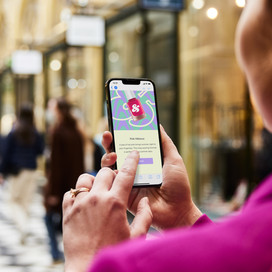Table of contents
As a business owner or manager, building a successful business is your priority. But it’s not an easy task. Beyond running your business day-to-day, you have to attract and maintain a steady stream of customers to keep your business afloat. Another challenge is finding ways to delight and stay connected with customers.
Starting a loyalty program is one way you can engage customers to boost retention. A loyalty program is a marketing strategy where customers are rewarded for their purchases and continued engagement with a brand. The rewards may include discounts, free products or services, or points that can be redeemed toward purchases.
Statistics from Square and Wakefield’s Future of Restaurants report show that 42% of restaurant owners and managers plan to offer new or expanded loyalty programs in 2021. This is why you should consider creating a loyalty program for your business. Here’s how to get started.
Why do loyalty programs matter?
Loyalty programs are important because they offer a number of benefits to businesses. These benefits include:
1. Improved customer experience and a sense of community
Customer loyalty programs incentivise customers, making them feel valued – as long as the rewards are worthwhile. The objective is to get them to return. By rewarding loyalty, customers feel valued and appreciated. It keeps businesses connected with customers and encourages that repeat business. Essentially, loyalty programs ensure customers feel appreciated when they are rewarded.
2. Higher customer retention and increased revenue
Research has shown that acquiring new customers can be a lot harder and up to 25 times more expensive than retaining existing ones. That’s more than enough reason to prioritise customer retention. But the numbers get even more interesting: if you increase customer retention by just 5%, you can produce a 25% increase in profits.
A brand’s loyal customers are not only more likely to continue buying from the brand, but they are more receptive to new products from the brand. On average, loyalty programs boost repeat business by 40% and they are often cheaper to manage in the long run compared to the cost of acquiring new customers.
A well-executed loyalty program can also be a self-sustaining system. Once you have established the rewards process, customers can continue to earn and redeem those rewards in perpetuity or until you discontinue the program.
3. Valuable business insight
Loyalty programs can uncover a wealth of data for your business, especially when they are backed by the right technology. You can gain key insight into your customers’ needs and preferences to optimise your offerings.
With Square Loyalty, for instance, you can track sales and gain insight into your loyalty program’s impact on sales. For example, you can compare average spend and visits from customers enrolled in your program versus customers who aren’t.
How to start a loyalty program
Creating a successful loyalty program requires careful planning and the right tools to power the rewards system. Below are two of the most important steps to take when starting a loyalty program.
Step 1: Create meaningful rewards
The first step is to understand what your customers want and create rewards that will be meaningful to them.
Two of the most common loyalty program rewards are:
Points-based rewards
In point-based loyalty programs, customers earn points when they make a purchase or perform certain activities, such as participating in a survey. These points can be exchanged for food items, coupons, or gift cards. For example, by signing up for your restaurant’s newsletter, the customer could earn enough points for a free coffee.
At Square, we currently have this type of rewards system, with four different types of rewards on offer:
Discount on the Entire Sale: Set a fixed percentage or dollar discount for entire sale.
Discount on an Item or Category: Set a fixed percentage or dollar discount on specific items. For example, 20% off all coffee.
Free Item: Select a specific free item. For example, a free latte.
You can customise how your clients earn these awards based on visits, total spend, or item/category:
Visit: Minimum reward points per visit. For example, a $5 purchase earns one point per item/visit.
Cost: Reward points based on total cost before tip. For example, one point for each $5 spent.
Any Item or Category: Purchase points for any item or category. Eg. an espresso gets one point, a latte gets two, and a burger gets three.
Tiered rewards
The other type of rewards system is a tiered rewards system helps to create a sense of exclusivity. Each tier can have exclusive benefits, such as early access to sales/new products or access to invite-only events/experiences. Customers unlock these benefits when they reach specific purchase milestones or collect a specified number of points.
Step 2: Set up the rewards process
Creating attractive rewards is only one piece of the puzzle. The next step is to set up the process through which customers can earn and redeem those rewards. While the process could be manual, implementing technology to automate rewards and integrate them into other parts of your business, such as marketing, is crucial in order to deliver a seamless customer experience. For many businesses combining Square’s Loyalty and Marketing solutions helps them to power and grow their programs.
The value of loyalty programs
While many businesses view loyalty programs only as a rewards system, loyalty programs can serve as much more. They can be an important way to build a deeper relationship with customers and keep them continuously engaged. The entire rewards process presents opportunities for your business to delight and stay connected with customers.
The right loyalty program can help your business build trust with customers, deliver a memorable customer experience, and deepen customers’ commitment to your brand.
![]()











